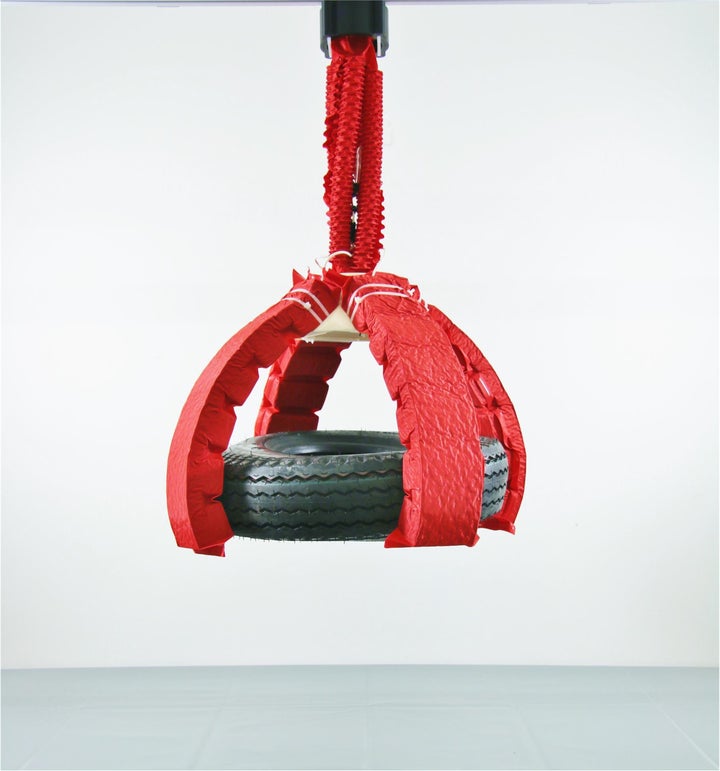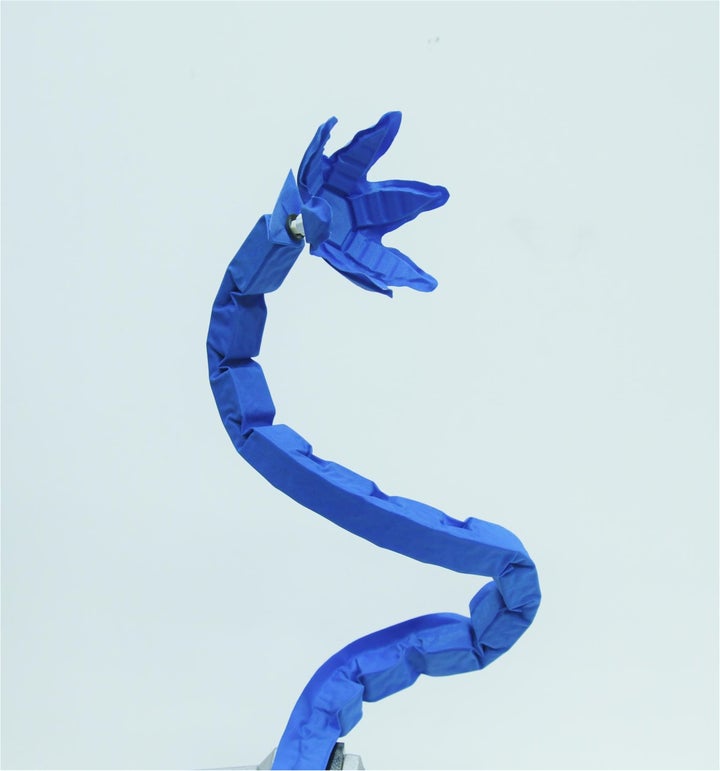Imagine a robot that has superhuman strength and costs just a fraction of the robots we see today.
Well researchers at MIT CSAIL and Harvard’s Wyss Institute have brought us one step closer to this reality by creating a range of origami-inspired robotic muscles.

The artificial muscles might not look tough but they can lift 1000x their own weight and cost as little as $1 to manufacture.
To give you some idea of just how strong that is it’s the equivalent of a 2.6 gram muscle lifting 3kg in weight.
Or in other words, a duck lifting a car.
These ultra-flexible materials could be applied to everything from deep-sea robotics to creating tiny yet incredibly strong tools for performing surgery.
Thanks to their construction they require no directional input, instead the instructions for how it should behave are folded into the design of the muscle itself.
“One of the key aspects of these muscles is that they’re programmable, in the sense that designing how the skeleton folds defines how the whole structure moves. You essentially get that motion for free, without the need for a control system,” says postdoc Shuguang Li who worked on the project.
While the team knew that the design had potential, they were shocked when they discovered what they’d created.

“We were very surprised by how strong the muscles were. We expected they’d have a higher maximum functional weight than ordinary soft robots, but we didn’t expect a thousand-fold increase. It’s like giving these robots superpowers,” explains CSAIL director Daniela Rus.
The muscles operate by placing a pre-folded structure inside a vacuum, then as the air or liquid is added or removed it forces the structure to change its shape.
The advantages to this are firstly that it’s incredibly simple to make, secondly they’re safer than competitors because they rely on creating a vacuum rather than inflation and finally you can literally build the brain into the muscle itself.
While this does limit the muscle to simply performing one or two actions it does give them incredible reliability.

“In addition to their muscle-like properties, these soft actuators are highly scalable. We have built them at sizes ranging from a few millimeters up to a meter, and their performance holds up across the board,” explains Professor Robert J. Wood who co-authored the paper.
“This feature means that the muscles can be used in numerous applications at multiple scales, such as miniature surgical devices, wearable robotic exoskeletons, transformable architecture, deep-sea manipulators for research or construction, and large deployable structures for space exploration.”
The next step for the team is to create something considerably more complex.
“The possibilities really are limitless. But the very next thing I would like to build with these muscles is an elephant robot with a trunk that can manipulate the world in ways that are as flexible and powerful as you see in real elephants,” Rus says.
